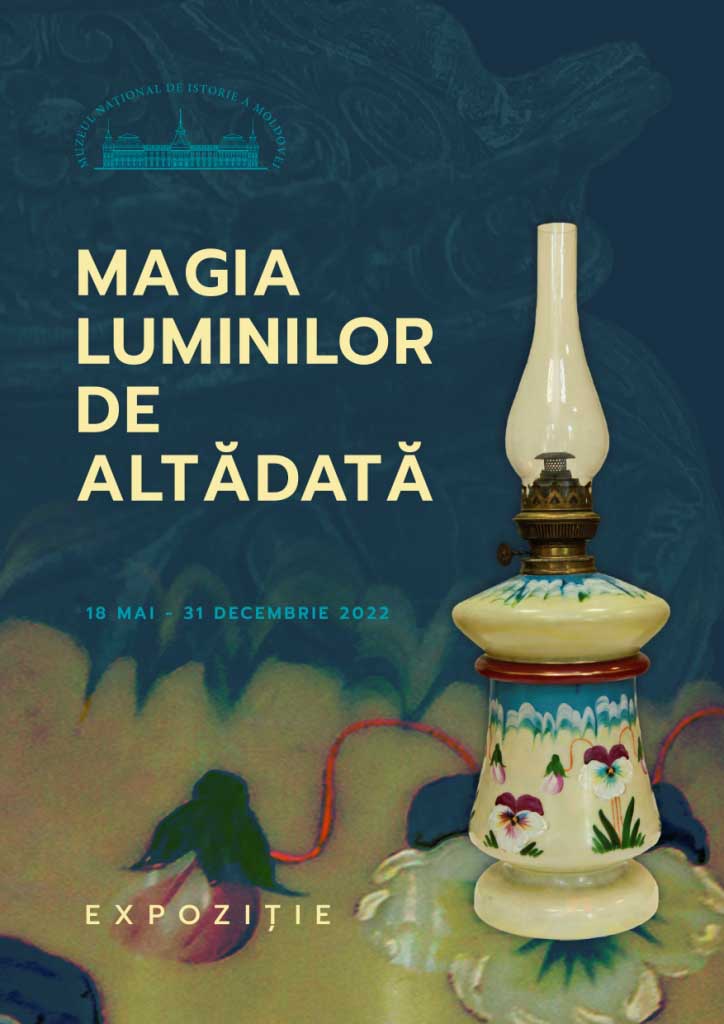
The temporary exhibition "Magic of Lights of Other Times" is the result of research and scientific development of the collection of lighting fixtures from the National Museum of History of Moldova.
The exhibition presents a variety of forms and types of devices that reflect the evolution and role of artificial lighting in everyday and spiritual life. It brings together more than fifty authentic objects of scientific, historical, commemorative and aesthetic value, which form the basis of the exhibition; these pieces came into the museum's collections through transfers, purchases and donations and date back to the period from the 5th-4th centuries BC to the 1990s. Many of these authentic pieces have undergone a process of restoration and conservation.
The exhibition takes us back to the past of this "miracle", providing an opportunity to leaf through the history of the evolution of indoor and outdoor artificial lighting by the display of a variety of light sources: hearth fire, torch, oil lamp, made of ceramic and metal. This is followed by candlesticks, which, in terms of their functionality and symbolism, served and continue to serve as a support for light, being used in church and secular environments. A candle, initially made of animal fat with a cane wick, then of beeswax and cotton or hemp thread, was easy to use and simple and economical to manufacture compared to other devices, helped to create a whole family of different lamps. The typological range of fixtures continues with a variety of gas and electric table lamps, some of which bear the brand of the manufacturer: Otto Muller, Berlin, Ehrich &Graetz Berlin, Anna Brenner (Germany), Brunner, Schneider, Ditmar (Warsaw), Triumph (France), and others. With the beginning of the process of modernization of society, table and ceiling chandeliers began to be used more and more, differing in material, size, style and elegance. Although in small quantities, professional lighting devices are also presented at the exhibition: lanterns used by miners in underground mines and lanterns of railway workers. Among the portable lanterns are those for everyday use, called "Bat" after the name of the German company "Fledermaus" that produced them, which were used for lighting at night. Lanterns played an important role in illuminating public places, initially by burning animal fat, with which the wick was impregnated, and later gas lanterns appeared, which illuminated only central or commercial roads.
Noteworthy are objects that, in addition to their historical, scientific and artistic value, also have memorial significance. Here we should mention the silver candlestick that belonged to the family of the Bessarabian writer Constantin Stamati, the kerosene ceiling lamp from the prominent politician and philanthropist Vasile Stroescu's mansion in the village of Brânzeni, Edineț district, the electric table lamp of Academician Nicolae Dimo, the night lamp of film director Valeriu Gagiu and the table lamp of conductor B. Milyutin.
The exhibition is complemented by thematic photographs and reconstructions of mini-interiors with artificial lighting.
The temporary exhibition "Magic of Lights of Other Times" can be visited from May 18, 2022 to December 31, 2022.


























.JPG)
.JPG)







































